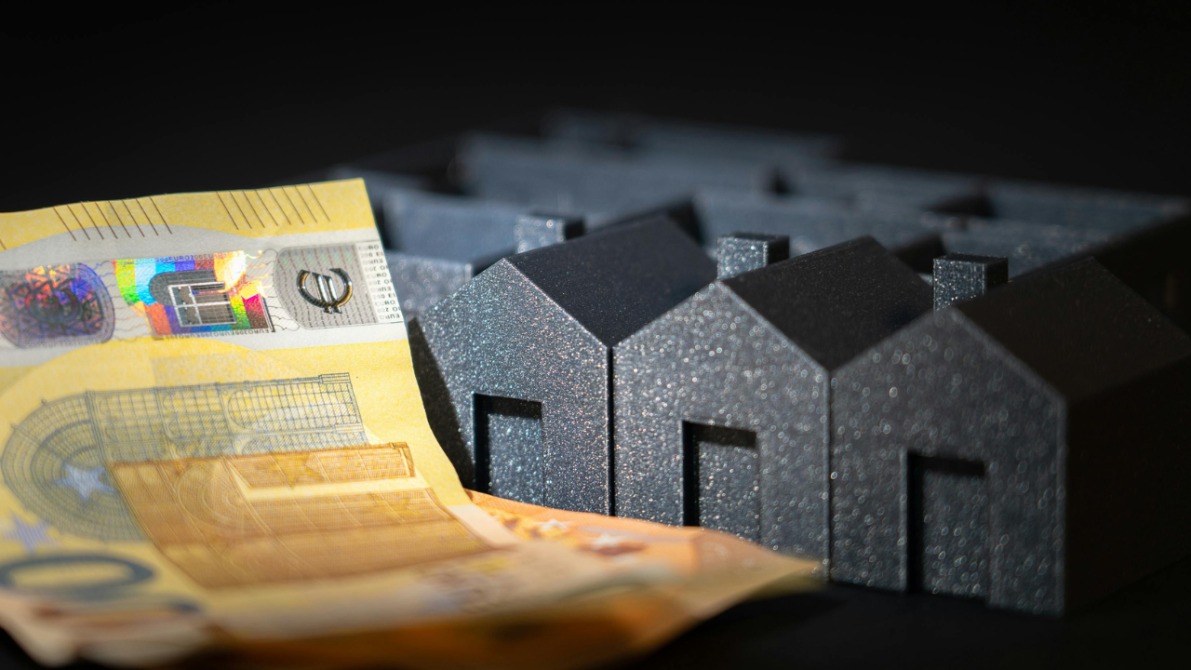The Best Ways to Finance a Renovation: A Strategic Guide for Savvy Investors
Key Takeaways (Summary Table):
| Financing Option | Best For | Interest Rate | Risk Level | Key Benefit |
| Cash-Out Refinance | Major renovations | Low | Medium | Lower rates, larger sums |
| Construction Loan | Large-scale projects | Medium | Medium | Staged payments, project-matched |
| Using Savings | Small renovations | None | Low | No debt, full control |
| Unsecured Home Improvement Loan | Medium-sized projects | Medium-High | Low | No collateral, quick approval |
| Personal Loan | Small/medium projects | High | Low | Fast, no equity needed |
| Private Lender | Last resort | Very High | High | Flexible, but risky |
Renovation can be the fastest way to manufacture equity—if you get the finance right. For the strategic renovator, the best ways to finance a renovation aren’t just about getting the money; they’re about protecting your family’s future, avoiding overcapitalising, and ensuring every dollar works as hard as you do. In this guide, we’ll break down the proven options, the pitfalls to avoid, and the frameworks that separate the confident investor from the “reno regret” crowd.
Why Renovation Finance Is Where Most Investors Go Wrong
You’ve seen the glossy “before and afters” on Instagram. You’ve watched the TV shows where budgets magically stretch and profits roll in. But in the real world, the wrong finance decision can turn a dream project into a slow-motion nightmare: budget blowouts, overcapitalising, and the gut-punch of a valuation that barely budges.
The truth? Most renovators spend hours Googling strategies, only to end up confused by conflicting advice. They’re haunted by the fear of sinking too much money into a project and never seeing a return. And when the numbers don’t add up, it’s not just money at stake—it’s family trust, future security, and the confidence to keep building wealth.
The Proven Framework: How Savvy Renovators Fund Their Projects
Let’s cut through the noise. Here’s how experienced investors approach renovation finance—step by step, with clarity and control.
1. Cash-Out Refinance: Leveraging Your Equity
If you’ve built up equity in your home or investment property, a cash-out refinance is often the most cost-effective way to fund a major renovation. This means refinancing your existing mortgage for a higher amount and taking the difference as cash.
Why it works:
- Lower interest rates than personal loans or credit cards
- Longer repayment periods keep monthly payments manageable
- Potential tax benefits (check with your accountant)
What to watch:
- Extends your mortgage term or increases repayments
- Upfront refinancing costs
- Your home is collateral—so risk is real if you can’t keep up
Real scenario:
Mark, a 42-year-old renovator, used a cash-out refinance to fund a $100k extension. By leveraging his equity, he kept interest costs low and repayments predictable—giving him the confidence to focus on adding value, not worrying about cash flow.
2. Construction Loan: For Large-Scale Projects
Planning a full extension, structural changes, or a knock-down rebuild? A construction loan is designed for you. Funds are released in stages as your project hits key milestones, and you only pay interest on what you’ve drawn.
Why it works:
- Matches your project’s timeline
- Lower rates than unsecured loans
- Interest only on progress payments
What to watch:
- Requires detailed plans and lender approval
- Funds released in stages—so cash flow management is crucial
- Higher upfront costs
Pro tip:
Use a construction loan when your renovation is complex and staged. It keeps you disciplined and ensures you’re not paying interest on money you haven’t used.
3. Using Savings: The Debt-Free Route
If you’ve set aside funds for home improvements, using your savings is the simplest, safest way to finance a renovation.
Why it works:
- No interest or loan costs
- No risk of losing your home
- Immediate access to funds
What to watch:
- Can deplete your emergency buffer
- May not cover large projects
- Limits liquidity for other goals
When to use:
For smaller renovations or if you have a robust emergency fund. It’s the ultimate peace-of-mind option.
4. Unsecured Home Improvement Loan: Fast and Flexible
Don’t want to use your home as collateral? An unsecured home improvement loan is designed for renovations, with fixed repayments and no need for property security.
Why it works:
- No risk to your home
- Fast approval and funding
- Fixed repayments for easy budgeting
What to watch:
- Higher interest rates than secured loans
- Shorter terms mean higher monthly payments
- Borrowing limits based on income and credit
Best for:
Medium-sized projects where speed and simplicity matter more than the lowest possible rate.
5. Personal Loan: For Smaller, Fast-Tracked Projects
Personal loans are quick to arrange and don’t require equity, making them ideal for smaller renovations.
Why it works:
- Fast access to funds
- No need for property valuation
- Fixed terms and repayments
What to watch:
- Higher rates than home loans
- Lower borrowing limits
- Strict credit requirements for best rates
Use case:
DIY kitchen update, bathroom refresh, or landscaping—when you need a lump sum, fast.
6. Private Lender: The Last Resort
If banks say no, a private lender can provide funds—often at a much higher cost and risk.
Why it works:
- Fast approval, flexible terms
- Useful for borrowers with bad credit or irregular income
What to watch:
- Extremely high interest rates (10–20%+)
- Short terms, balloon payments
- High risk of default and property loss
Warning:
Only consider this if your renovation will deliver a strong, fast return—and you’ve exhausted all other options.
How to Choose the Right Finance Option for Your Renovation
Ask yourself:
- How much do I need, and for how long?
- Do I have equity to leverage, or will I need an unsecured loan?
- What’s my risk tolerance if things go wrong?
- Will this renovation genuinely add value, or am I at risk of overcapitalising?
Smart renovators use a tested framework:
- Start with a clear renovation ROI plan (not just a “wish list”)
- Use tools like PropertyChat.ai to analyse suburb and property data
- Get expert mentoring to avoid common finance traps
The Hidden Dangers: Overcapitalising and Budget Blowouts
The biggest fear for strategic renovators? Sinking too much money into a project and never seeing a return. Overcapitalising is real—and it’s why finance decisions must be made with a clear, data-driven plan.
Avoid these traps:
- Borrowing more than the property can support
- Relying on “gut feel” instead of market data
- Ignoring the true cost of interest and fees over time
Solution:
Use a proven renovation framework and AI-powered tools to model your project’s ROI before you borrow a cent.
Why Most Free Advice Fails—and What Actually Works
You can watch renovation shows, scroll Instagram, or ask friends for tips—but most free advice is scattered, unrealistic, and doesn’t account for your unique situation. The difference? Real results come from a structured system, not guesswork.
What works:
- Research-driven frameworks (like the Ultimate Guide to Renovation)
- Personalised mentoring from experienced investors
- AI-powered property analysis to cut through the noise
Ready to take the next step?
Explore the free tools and expert guidance at PropertyChat.ai and Your Property Success to build your renovation plan with confidence.
Finance Is the Foundation of Renovation Success
The best way to finance a renovation isn’t just about the cheapest loan—it’s about matching the right finance to your project, your risk profile, and your long-term wealth goals. With a clear plan, the right tools, and expert support, you can avoid the mistakes that haunt most renovators and create real, lasting value.
Internal Links for Further Learning
- Ultimate Guide to Renovation
- PropertyChat.ai Free Tools
- Investors Choice Mortgages
- Renovation Cost Calculator
Ready to renovate with confidence?
Start your journey with the proven frameworks and expert support at Your Property Success and PropertyChat.ai.
Transcript
What are the best ways to finance a renovation?
0:00So, you’re thinking about renovating.
0:02It’s an exciting idea, right? It can be
0:04an absolutely fantastic way to build
0:06wealth. But, and this is a big butt,
0:09only if you get the financing right from
0:11the get- go. And look, this isn’t just
0:13about finding the money. It’s about
0:14making a really smart strategic decision
0:17that’s going to set your whole project
0:18up for success and more importantly,
0:21protect your financial future. And this
0:23quote right here, it just gets right to
0:25the heart of it. The stakes are
0:26seriously high. Choosing the wrong
0:28financing isn’t some minor hiccup. It
0:31can literally derail your entire
0:33project, turning that exciting dream you
0:35had into a stressful slow motion
0:37nightmare. We’ve all heard the horror
0:38stories, right? I mean, we’ve all
0:40scrolled through Instagram and seen the
0:42dream, haven’t we? These perfect glossy
0:44before and afters. It all looks so easy,
0:47so effortless. But the reality, well,
0:49the reality can be a whole different
0:51story. We’re talking budget blowouts,
0:53unexpected costs popping up left and
0:55right, and the huge risk of overc
0:57capitalizing, which is just a fancy way
0:59of saying you sink a ton of money into a
1:01project that doesn’t actually add that
1:02much value. That right there, that’s the
1:05problem we’re going to solve today. So,
1:07how do we build a better path and avoid
1:09that nightmare? Well, you’ve got to
1:11start looking at your financing options
1:12like a toolkit. We’re going to cover six
1:14main tools today, and each one is
1:16designed for a very specific job.
1:18Choosing the right one is your absolute
1:21first step to a successful renovation.
1:24Okay, here’s a quick map of that toolkit
1:26we just mentioned. Think of this as the
1:2830,000 ft view. You can see the options
1:30range from using the value you’ve
1:32already built in your home to faster
1:34unsecured loans. Just take a look at how
1:36the interest rates and the risks change
1:38with each one. We’re about to dive into
1:40each of these, but this gives you the
1:41lay of the land. First up is the cash
1:44out refinance. Now, this is a super
1:46common strategy, especially for
1:48renovators who have been in their
1:49property for a while and have built up
1:51some equity. You’re essentially tapping
1:53into the value you already own to get
1:55the cash you need for a big project. And
1:58here’s the core trade-off you need to
1:59understand. The benefits, they’re pretty
2:01significant. You’re looking at lower
2:03interest rates than other types of loans
2:05and longer, more manageable repayment
2:07periods. But, and this is a big butt,
2:10there’s a major risk to think about,
2:11your home itself is the collateral for
2:13this loan. It’s on the line. Next up,
2:16we’ve got the construction loan. Now,
2:18this is a much more specialized tool.
2:21It’s really designed for the big jobs.
2:23You know, a full extension, maybe even a
2:25knockdown rebuild. The key difference
2:27here is the money isn’t just handed to
2:29you all at once. It’s released in stages
2:31as you hit key milestones in the
2:33project. The big advantage here is
2:36financial discipline. It’s huge. You
2:38only pay interest on the money you’ve
2:40actually used, which is incredibly
2:42efficient. So, what’s the catch? Well,
2:45it demands meticulous upfront planning.
2:47We’re talking detailed plans, builder
2:49quotes, the whole shebang, and you need
2:51the lender’s approval at every single
2:53stage. So, it’s a great option for sure,
2:55but it is not for the disorganized.
2:58Now, for what seems like the simplest
2:59path of all, just using your savings.
3:02For smaller projects, this is really the
3:03debt-free gold standard. It offers
3:06complete and total peace of mind. But
3:08wait, even the so-called safest option
3:11has a hidden risk. While it’s true you
3:13avoid debt and you protect your home,
3:15you could very easily wipe out your
3:16entire emergency fund. So, think about
3:19it. What happens if the renovation goes
3:21over budget or something totally
3:22unexpected happens in your life? You
3:24could be left completely exposed.
3:27Okay, so what if you don’t have enough
3:29equity built up? Or what if you just
3:32plain don’t want to use your home as
3:33collateral? That’s where an unsecured
3:35home improvement loan comes into play.
3:37It’s a fast and flexible option that’s
3:40specifically designed for renovations.
3:43So, what’s the trade-off here? Well, you
3:44get speed and you get that peace of mind
3:47because you’re not putting your home on
3:48the line, but you will pay for that
3:50convenience. You’re looking at higher
3:52interest rates and shorter loan terms,
3:54which means bigger monthly repayments.
3:56Now, this is kind of like the home
3:57improvement loans cousin. A standard
4:00personal loan is all about one thing,
4:02speed. Think of this as your go-to
4:04option for, say, a quick bathroom
4:06refresh or some landscaping where you
4:08need a lumpsum fast and you just don’t
4:10want to go through all the hassle of
4:11refinancing. And again, you can see the
4:14pattern here, can’t you? Speed and
4:16convenience. They come at a cost. The
4:19rates are definitely higher and you
4:21can’t borrow nearly as much as you could
4:22against your property. This is a tool
4:24for smaller targeted jobs. It’s for the
4:27sprint, not the marathon. All right, now
4:30we come to our sixth and final option.
4:32And I really want you to pay close
4:34attention here. A private lender. This
4:36is the absolute last resort. This is the
4:39emergency glass you only break when
4:41every single other option has been
4:43exhausted. Just look at that number. 10
4:46to 20%. Or sometimes even higher. We are
4:49not talking about a small difference
4:50here. This is an extremely expensive way
4:53to borrow money. And honestly, it should
4:55immediately set off some serious alarm
4:56bells. And here’s exactly why this is so
4:59dangerous. You’re dealing with sky-high
5:01interest rates, really short repayment
5:03terms, sometimes with these massive
5:04balloon payments at the end, and a very,
5:07very real risk of losing your property.
5:09This path is for seasoned experts who
5:11have a guaranteed quick profit lined up.
5:14For pretty much everyone else, it’s a
5:15road to financial ruin. Okay, let’s take
5:18a breath. We’ve seen the whole toolkit
5:20now. So, let’s talk about you. How do
5:22you actually choose the right path for
5:24your specific situation? It’s all about
5:27moving from just knowing the options to
5:29actually making an informed decision.
5:32You know, the best way to start is by
5:34asking yourself these four questions and
5:36be honest with yourself. How much risk
5:38are you truly really willing to take?
5:40And maybe most importantly, have you
5:42done the research to know, not just
5:44feel, but know that this renovation will
5:47actually deliver a return? Because that
5:49last question that leads us directly to
5:51the two biggest dangers in any
5:53renovation. Over capitalizing. again,
5:56spending more than you’ll ever get back
5:58and the all too common budget blowout.
6:00Even the absolute best financing plan in
6:02the world can be completely destroyed by
6:04these two traps. Avoiding these traps is
6:07totally non-negotiable. Don’t borrow
6:09money based on a wish list. Please don’t
6:12just guess what your property will be
6:14worth when the work is done. And always,
6:16always calculate the total cost of the
6:18loan over its lifetime, not just the
6:20monthly payment. This is where data
6:22beats emotion every single time. So, how
6:25do we put all of this together? Well,
6:27it’s about taking your next step with
6:28confidence. It’s about replacing all
6:30that guesswork and fear with a clear,
6:32structured system for success. And you
6:35know, that’s the real takeaway from all
6:37of this. Savvy investors, they don’t
6:39just get lucky. They use proven
6:41frameworks. They rely on data. And they
6:43make their big financial decisions based
6:44on a clear plan, not just some dream
6:47they saw on TV. So, if you’re ready to
6:49move from guesswork to a system, the
6:51tools and frameworks over at property
6:53chat.ai AI can help you build that plan
6:55with confidence. And I’ll leave you with
6:57one final question to think about. Is
6:58your renovation plan built on solid data
7:01or is it just a dream?
Frequently Asked Questions
What’s the safest way to finance a renovation?
Using your own savings is the lowest risk, but for larger projects, a cash-out refinance or construction loan (with a clear ROI plan) is usually safest.
How do I avoid overcapitalising on my renovation?
Use a data-driven framework to model your project’s return before you borrow. Don’t rely on TV shows or “gut feel.”
Can I use a personal loan for a renovation?
Yes, for smaller projects. Just be aware of higher interest rates and lower borrowing limits compared to home loans.
What if I don’t have enough equity?
Consider an unsecured home improvement loan or personal loan—but always compare rates and terms, and avoid private lenders unless absolutely necessary.



